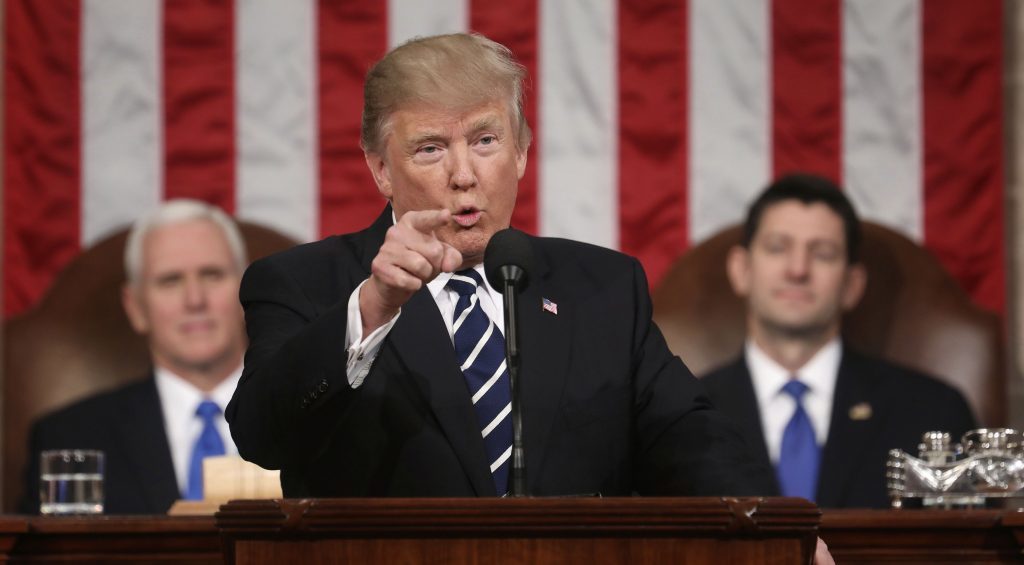
Oil retreated from the highest level since 2014 as investors weighed competing views on whether the U.S. will reimpose sanctions on OPEC producer Iran and the potential consequences of such a decision.
New York futures slid as much as 1.3 percent, with U.S. President Donald Trump set to make a call on whether he’ll pull out of a 2015 deal between Iran and world powers that had eased sanctions on the producer in return for curbs on its nuclear program. In the previous session, prices briefly slid below $70 after breaching the level for the first time in 3 1/2 years following news that an announcement will be made at 2 p.m. Tuesday in Washington.
The price volatility has been spurred by swirling speculation over the impending decision. While foreign officials and analysts say Trump is likely to remove the U.S. from the pact, the president may also surprise allies by agreeing to stay in the accord a while longer as American and European diplomats forge side deals aimed at addressing his concerns.
The potential fallout in the oil market is unclear. While consultant FGE is among industry watchers who have said renewed U.S. measures may cut production from OPEC’s third-largest member, Barclays Plc sees Iran’s output little changed in 2018. How European and Asian oil buyers deal with possible American action, as well as the effect on OPEC’s output curbs aimed at shrinking a global glut, will also be watched.
“Reaching the $70 milestone gave investors a sense of accomplishment and triggered profit-taking,” Satoru Yoshida, a commodity analyst at Rakuten Securities Inc., said by phone from Tokyo. Still, “oil is trading around $70 as the market is factoring in the possibility that the U.S. will unilaterally terminate the Iran deal and reimpose sanctions.”
West Texas Intermediate oil for June delivery dropped as much as 94 cents to $69.79 a barrel on the New York Mercantile Exchange and traded at $69.87 at 1:01 p.m. in Singapore. The contract climbed $1.01 to $70.73 on Monday. Total volume traded was about 3 percent above the 100-day average.
Brent for July settlement fell 77 cents to $75.40 a barrel on the London-based ICE Futures Europe exchange. Prices on Monday climbed 1.7 percent to $76.17. The global benchmark crude traded at a $5.61 premium to July WTI.
Futures for September delivery fell 0.2 percent to 457.2 yuan a barrel on the Shanghai International Energy Exchange. The contract rose 2.6 percent Monday, the biggest gain since April 12.
While oil has rallied this year on everything from heightened geopolitical risks in the Middle East to persistent output curbs by the Organization of Petroleum Exporting Countries and turmoil in Venezuela, it’s been driven by speculation over Iran in recent days. It’s helped overshadow booming U.S. production that risks undermining OPEC’s production curbs.
A potential U.S. withdrawal isn’t backed by any of the other five countries that are part of the agreement. U.K. Foreign Minister Boris Johnson is in Washington this week to make a last-ditch argument to persuade Trump to remain in the accord, following visits by French President Emmanuel Macron and German Chancellor Angela Merkel.
Israel, meanwhile, has called the accord fatally flawed and must be “fully fixed or nixed” to stop Iranian aggression sooner than later. Iranian President Hassan Rouhani has warned that the U.S. would face “historic” regret if it pulled out.
Oil-market news:
Crude inventories in the U.S. probably increased 1.25 million to 437.2 million barrels in the week ended on May 4, according to the median estimate of six analysts surveyed by Bloomberg. Gasoline futures dropped 1 percent to $2.1130 a gallon after gaining 1 percent Monday.